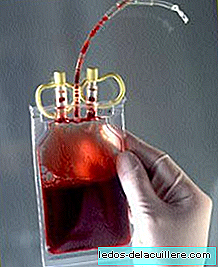
A study by American scientists shows the benefits of umbilical cord blood with respect to its use in the treatment of childhood leukemia. As the statistics reflect, it is given a higher survival rate in children who have been treated with umbilical cord blood stem cells than with other treatments.
The study took data from 785 children under 16 years with acute lymphoblastic leukemia or acute myeloid leukemia that formed two groups, those treated with stem cells from umbilical cord blood and those who received a bone marrow transplant. The data left no doubt, up to 20% more survival was reflected in the group that used umbilical cord blood.
A special feature of this blood is the possibility of being used without the need for an affinity between donor and recipient, with bone marrow transplants it is necessary that there is full compatibility. In addition, the fact of being able to store it makes it especially interesting and important. The effectiveness is much greater but so is the speed, since for a bone marrow transplant you need to find the appropriate donor and with the wait, the disease can seriously worsen the child's health status. Another advantage offered by the treatment with cord blood is that there is less rejection, although it is true that the treatment is somewhat slower than with the transplant, but there is already a saying for that, "without haste but without pauses."
On several occasions we have reviewed the importance of the umbilical cord and how interesting it would be to conserve this precious resource to save the life of a baby.












